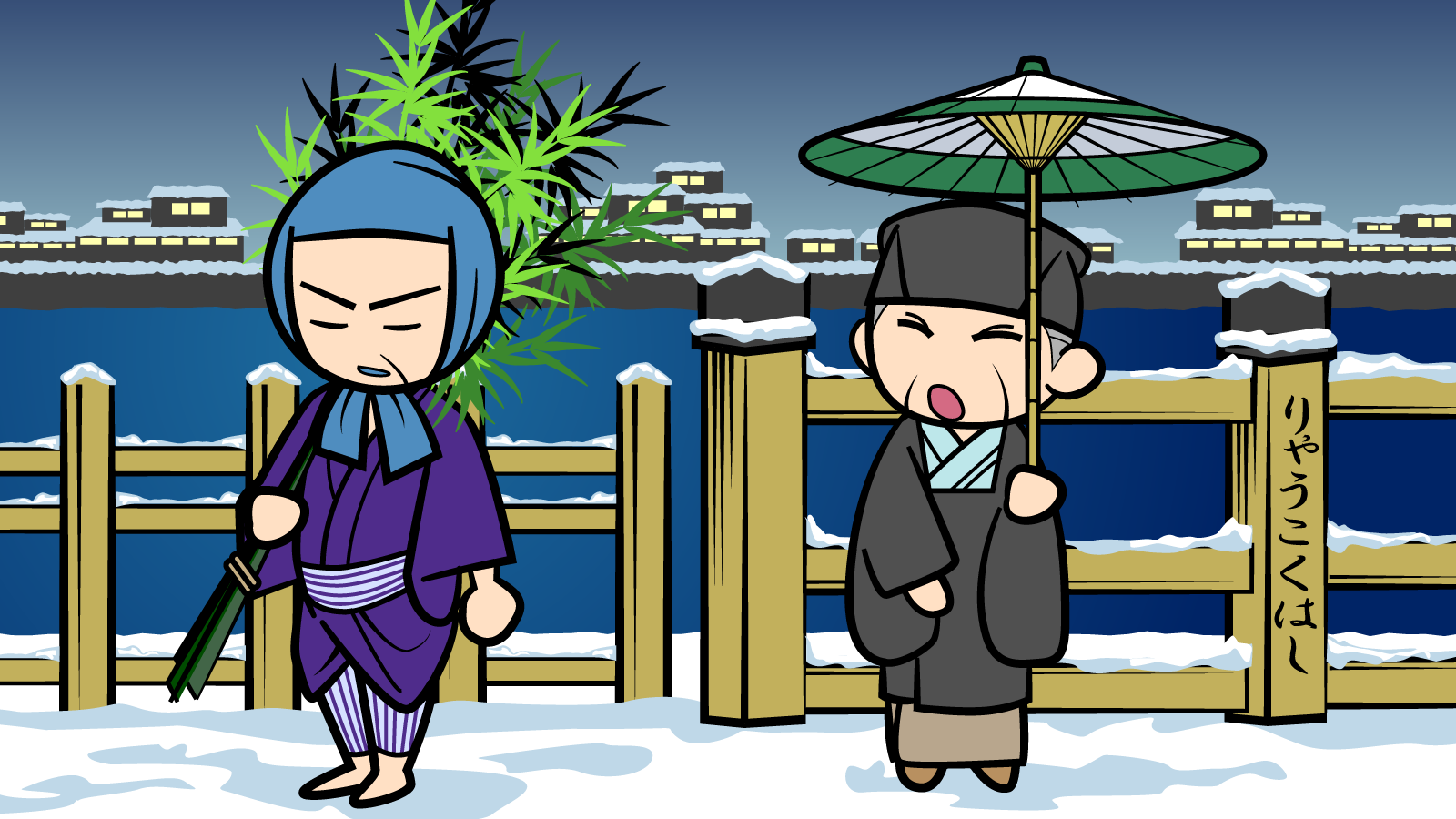Ryogokubashi, Ryogoku, Sumida ward
Gengo Otaka: The Encounter at Ryogokubashi on the Eve of Vengeance
The eve of the most famous revenge in Japan, one samurai met an old friend.

(Voice actor) Mr.David Radtke

Ryogokubashi bridge connects Ryogoku in the Sumida ward of Tokyo, and Higashi-Nihonbashi, in the Chuo ward. With this bridge over Sumida river, Musashi province and Shimosa province were divided. This Ryogokubashi bridge is also famous for appearing in a scene from “47 Ronin” a popular story in Japan. On March 14th, 1701, at the Matsu no Oroka of Edo castle, there was an incident in which the lord of the Ako domain (now Ako city, Hyogo prefecture), Takuminokami Asano, attacked Kozukenosuke Kira with a sword and injured him. In Edo castle where the shogun Tsunayoshi Tokugawa was, one could not draw his sword with no reason, and not only breaking that rule, but also injuring someone could not be allowed. Therefore, Takuminokami was ordered to commit seppuku. And the Ako domain was destroyed. Ako domain’s samurais suddenly lost a master to serve, becoming ronin, or unemployed samurai. Meanwhile, Kozukenosuke was not punished. At the time, there was a rumor that Kozukenosuke was bullying Takuminokami. The rule among samurais was “both parties are to be blamed.” The rule mandated that the same punishment would be applied to both parties of the fight. However, when it came to Takuminokami and Kozukenosuke, this rule was not followed. So, led by Kuranosuke Oishi, the chief vassal (modern-day equivalent to a minister), the ronin plotted to avenge Takuminokami by killing Kozukenosuke. Among the Akoroshi, there was a samurai by the name of Gengo Okawa. Gengo had a talent for haiku. Haiku’s leading authority, Basho Matsuo’s first pupil, Kikaku Takarai even appraised his talent. The masters of haiku were frequently invited by feudal lords to hold meetings to read haiku. Taking advantage of the personal network he developed through haiku, Gengo tracked Kozukenosuke’s movements. And at last, Gengo found out that a tea party at Kozukenosuke’s mansion will be held on December 14th, 1702. On December 14th, 1702, Gengo Otaka dressed as a vendor on Ryogokubashi bridge and scouted Kozukenosuke’s mansion by day. The mansion could be seen clearly from the bridge. Just then, Kikaku walked pass Ryogokubashi bridge, and was surprised to find Gengo was dressed as a vendor instead of a samurai. Of course, he knew that the family Gengo served in the Ako domain was destroyed. Thinking that Gengo was living in poverty, Kikaku thought of a haiku on the spot. Those well-acquainted with haiku and tanka sometimes greeted others and made a connection with haiku or tanka. How did Gengo respond to Kikaku? What did Gengo want to tell Kikaku?
"100 hidden stories of Tokyo" Application Download
Caution
This app contains in-app purchases.
Please note that packet data fees will be charged separately.



